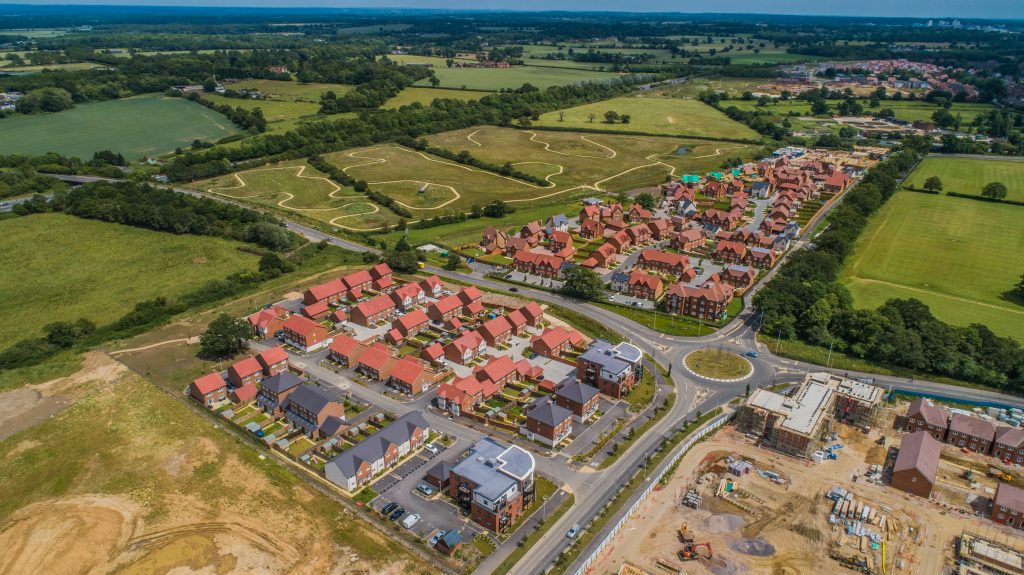Introduction
In recent years there has been growing recognition of the need to rapidly restore habitats and species populations, instead of purely conserving and protecting them. Notably, adopting the Kunming-Montreal Global Biodiversity Framework at the 15th COP for the UN Convention on Biological Diversity (COP15) marks a major milestone in the world’s efforts to halt and reverse nature loss.
This page is intended to act as an area where members can easily find information about different Biodiversity Enhancement (BE) Approaches, such as Biodiversity Net Gain (BNG), as well as guidance and training courses provided by CIEEM.
CIEEM, together with CIRIA and IEMA, has been at the forefront of exploring the potential for a biodiversity net gain approach. In December 2016 we published the first UK Principles on delivering biodiversity net gain through development following extensive consultation with stakeholders. In February 2019 we published new guidance on how to deliver net gain in practice. Development of this practical guidance, together with a series of case studies at a range of scales, was funded by a number of industry sponsors (See bottom of page) and written by an expert author team. All of these publications are free to download either as a single volume or in parts.
- Biodiversity Net Gain – Good practice principles for development (2016)
- Biodiversity Net Gain – A practical guide (2019)
- Biodiversity Net Gain – Case studies (2019) – also available individually on the Resource Hub
Printed copies of the guide are also available.
Supporters
We are grateful to the following funders for supporting this project:

Author Team:

Delivery Partners:

Biodiversity Net Gain (England)
Biodiversity Net Gain is an approach to development that intends to leave biodiversity in a better state than before. Where development has an impact on biodiversity it encourages developers to provide an increase in appropriate natural habitat and ecological features over and above that being affected in such a way it is hoped that the current loss of biodiversity through development will be halted and ecological networks can be restored. Biodiversity net gain relies on the application of the mitigation hierarchy to avoid, mitigate or compensate for biodiversity losses. It is additional to these approaches, not instead of them.
Mandatory biodiversity net gain as set out in the Environment Act 2021 will require all new developments (unless exempt) under the Town and Country Planning Act 1990 to deliver at least 10% biodiversity net gain from 12 February 2024, with small sites requiring BNG from 2 April 2024.
From 12 February 2024, BNG will be mandatory for new planning applications for major development made under the Town and Country Planning Act (TCPA) 1990, subject to the confirmed exemptions. Major development includes residential developments with 10 or more dwellings, or where the site area is greater than 0.5 hectares.
BNG for small sites will have an extended transition period and will apply from 2 April 2024. Small site development includes:
- Residential development where the number of dwellings is between 1 and 9, or if unknown the site area is less than 0.5 hectares
- Commercial development where floor space created is less than 1,000 square metres or the total site area is less than 1 hectare
Find out more about small sites BNG on the Natural England website and in this news item.
The value of habitats for biodiversity net gain will be measured using the Biodiversity Metric (see below). The metric will use changes in the extent and quality of natural habitats as a proxy for nature and then compare the habitat on-site before and after development. This comparison is underpinned by four key factors:
- Habitat size
- Habitat condition
- Habitat distinctiveness
- Strategic significance
The Biodiversity gain plan for development can then be achieved through:
- On-Site (Units) – Delivered on-site through habitat creation/enhancement via landscaping/green infrastructure
- Off-Site (Units) – Delivered off-site through habitat creation/enhancement
- Statutory credits – Only available as a last resort, delivered through large-scale habitat projects delivering high-value habitats which also provide long-term nature-based solutions
The statutory Biodiversity Metric is a biodiversity accounting tool that can be used for the purposes of calculating biodiversity net gain.
The Metric can be used to:
- Assess the biodiversity unit value of an area of land
- Demonstrate biodiversity net gains or losses in a consistent way
- Measure and account for direct impacts on biodiversity
- Compare proposals for a site – such as creating or enhancing habitat on-site or off-site
The Metric is intended to be used by:
- Ecologists or developers carrying out a biodiversity assessment
- Developers who have commissioned a biodiversity assessment
- Planning authorities who are interpreting metric outputs in a planning application
- Communities who want to understand the impacts of a local development
- Landowners or land managers who want to provide biodiversity units from their sites to others
Put simply, it involves the use of a metric as a proxy for recognising the negative impacts on habitats arising from a development and calculating how much new or restored habitat, and of what types is required to deliver sufficient net gain.
Online resources:
- Useful resources on the Planning Advisory Service (PAS) website
- Find CIEEM training courses on BNG
- WCL briefing arguing that 10% gain is not enough
See further useful links on our Biodiversity Net Gain Resources page.
Positive Effects for Biodiversity (Scotland)
The Scottish Government through its National Planning Framework 4 (NPF4) has previously recommended a qualitative not quantitative approach to biodiversity enhancement, relying on ecologists to use their professional judgement to determine what steps are needed to enhance development sites. However, the Scottish Government now appears to be taking a more hybrid approach.
In September 2023 the Scottish Government published a commissioned report undertaken by the SRUC (Scotland’s Rural College) titled ‘Research into Approaches to Measuring Biodiversity in Scotland‘. The report recommends a biodiversity framework or standard is needed, making use of multiple metrics or tools for different sectors to monitor biodiversity. The report highlights the priority biodiversity indicators identified across policy sectors, including habitat condition, species, ecological connectivity and ecosystem integrity/function, as well as the need for an approach to consider wider ecosystem benefits. The report specifically makes the recommendation that the Biodiversity Metric be adapted to include connectivity measures, as well as the other priority indicators noted above, concluding that “with refinement, Natural England’s Biodiversity Metric 3.1 could be adapted for planning and development use, and as part of a wider set of metrics within a biodiversity framework. These refinements include the coverage of habitats, and adjustments to condition assessment and multipliers to reflect Scottish contexts.” Following the release of the report, the Scottish Government has announced that NatureScot will be developing a metric to support the delivery of policy 3b.
Importantly, the Scottish approach provides different expectations for BE depending on the scale of the development, rather than introducing a single rule for all developments (in contrast to the English approach). Biodiversity Enhancement is required under planning policy for all “development proposals for national, major and of EIA development or development for which an Appropriate Assessment is required”. These developments “should only be supported where it can be demonstrated that the proposal will conserve and enhance biodiversity, including nature networks within and adjacent to the site, so that they are in a demonstrably better state than without intervention, including through future management.”
Net Benefits for Biodiversity (Wales)
The Welsh government has opted to deal with BE using policy, as outlined in Section 6.4 of Planning Policy Wales: Edition 11. It states the following: “Planning authorities must follow a step-wise approach to maintain and enhance biodiversity and build resilient ecological networks by ensuring that any adverse environmental effects are firstly avoided, then minimised, mitigated, and as a last resort compensated for; enhancement must be secured wherever possible”. As in Scotland, the Welsh approach requires a qualitative (professional judgement) rather than a quantitative (metric) approach. Ecologists are therefore encouraged to take a whole system approach when conducting assessments including an understanding of: The biodiversity value of a site Its ecosystem resilience, described using the DECCA approach (Diversity, Extent, Condition, Connectivity and Aspects) The ecosystem services or benefits provided, and Its existing and potential linkages with the wider green infrastructure network – before and after as a result of the development proposal. The Welsh approach does not distinguish between different scales of development, but the inclusion of “whenever possible” in the policy document may provide an exemption for certain developments.
Biodiversity Enhancements (Ireland)
There is currently no formal legislation or policy regarding BE in the Republic of Ireland or Northern Ireland. CIEEM has recognised the pressing need for national guidance on Biodiversity Enhancement (BE) in the Republic of Ireland and Northern Ireland. In this briefing paper, the Ireland Policy Group have reviewed the options available for this process and set out some recommendations on how we would like to see it implemented in an Irish context. We hope that this will be considered by national bodies responsible for the development of BE policy in the Republic of Ireland and Northern Ireland, as part of a broader national debate.
CIEEM Briefing Paper: Biodiversity Enhancement for New Developments in Ireland
